Google AdWords For Beginners
Paid advertising is a great marketing tool to drive more traffic to your website. However, to get yourself on that first page of Google search results is highly competitive. Organic SEO can only get you so far and you may need to look into paid advertising options to stay ahead of your competitors.
So what is PPC?
PPC or pay-per-click is an online advertising model where advertisers pay a fee each time their ad is clicked by a user. The most common type of PPC is paid search ads, whereby your ad will appear when the user makes a Google search with certain terms related to your product or service. For example, if you’re a business selling slippers and loungewear, you could bid for the keyword term “womens tweed slippers” and your ad may appear in the top Google search spots.
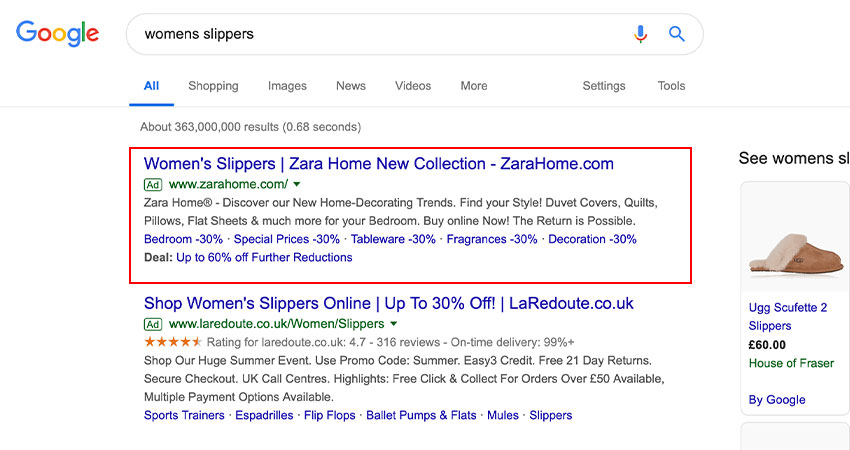
Benefits of using Google AdWords
Google AdWords is a powerful marketing tool for promoting your online business, provided you are equipped with the knowledge to get the most out of your budget. Below are just a few of the benefits of using Google AdWords:
Advanced Targeting – You can target certain audiences based on shopping behaviors, saved demographics and target specific locations, alongside device and time of day targeting.
Performance monitoring – You can track your ads progress with weekly and monthly reports and daily tracking using the ‘overview’ tab in your account.
Bid adjustments – Tools like bid adjustments, are great for making changes based on your findings. Under the ‘overview tab’ in your account, you can adjust your ad schedule to times that are more popular and adjust your bids according to popular devices. For instance, if you’ve found that most of your customers shop on a Friday at 7 pm on an iPhone, then you can adjust your bids in order to target those customers.
Pay for results – The great thing about PPC is that you only pay when your ad has been clicked, this will potentially generate a lead whether that be an online order, phone call or enquiry. *Beginners note* However if your ad is clicked but no further action is taken, or they exit the site, you will still be charged for that click.
Research
Once you have set your objectives, to conduct appropriate research to aid your campaign. You need to consider the following:
Competitors – What paid advertising are your competitors doing? What could you take away from how they market their products to their customers? Will your competitors affect your budgeting plan?
Keywords – Good keywords are the foundations of any PPC campaign, they are your targeting criteria. But what are keywords? Well, they are words and phrases that your customers are likely to use when searching for a product or service. Put yourself in your customers’ shoes and find out what they would type into a search to find your products and replicate that in your campaigns. Start off with a small and concise list of 3 keywords that are ad group specific, don’t bid on high volume, generic keywords. By doing this, you are more likely to maximise your budget. For example, you do not need to bid on your brand name as a keyword, make them product specific.
Keywords Types
Broad match – The default match type, that reaches the widest audience. The downfall with using broad match is your ad can be triggered every time a customer generates a search which contains any word from your phrase in any order. For example, if you used broad match on the term “bedroom clothing” your ad may be triggered if the user is searching for “bedroom furniture” “bedroom interior design” or “bedroom curtains.” Broad match types can be a great way to drive lots of clicks, however, you will waste your budget on irrelevant topics, so, as a rule, its best to stay away from using broad match.
Modified broad match – Modified broad match still allows you to reach a wider audience, but enables you to lock in certain words by using “+” By adding a plus sign in front of each keyword within your search term, you are telling Google that the search must include that term. For example, if your keyword term was “womens slipper boots” If you add a “+” to the words +slipper +boots, your ad can only be triggered if those specific words are used in the search. And if you want to make sure you are only targeting womens slippers you would ensure to put a “+” in front of +womens.
Phrase match – This match type does have some flexibility in terms of how the search term is presented. Your ad will only appear when your keywords are in the correct order and presented within the “apostrophe” parameters. However, words may be entered before and after your phrase for your ad to appear. For example, if your keyword was “fluffy slippers” your ad may be triggered with “discounted fluffy slippers” or “kids fluffy slippers.” So make sure you are being careful with who you are targeting, potential traffic could still come from a more widespread audience, searching for non-relevant topics to your brand.
Exact match – This is the most specific and restrictive match type. In order for your ad to appear, the user would need to type in your exact keyword phrase. However, there can be slight variations whereby your ad may appear when different plurals are used. Exact match is presented through “bracket” parameters. For example [luxury slippers]
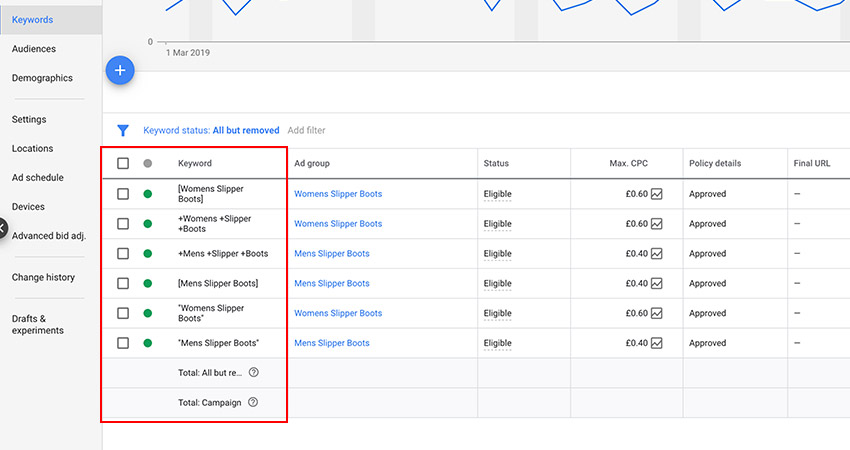
Negative keywords – Alongside your ad keywords, you should have a list of negative keywords to ensure you are driving the right traffic to your site and preventing your ad being triggered from non-related search terms and eating up your budget. Negative keywords are presented in the same way as positive keywords, by using broad, phrase or exact match. However, the difference between these is that you must add variations including, synonyms, singular or plural versions, and misspellings. If you are an eCommerce business, you will need to ensure you have excluded words that are irrelevant to what you sell, words like “bargains” “wholesale” and “repairs” for example, would be added if you don’t associate yourselves with those services.
Landing pages – Getting clicks is important, but what you want is for users to convert. There are many contributing factors in getting those conversions alongside your ads, the main thing you need to consider is landing pages.
Here are some tips on creating landing pages that convert:
- Simple and clean design
- Clear CTA’s
- Be transparent with products
- Product-related imagery
Account structure
- Google Adwords Account
- Campaign/Campaigns
- Ad Groups – usually 4 or more within a campaign
- Ads – 3 to each ad group
- Keywords – 3 to each ad, one exact, phrase and broad match
Ad Add Ons
- Sitelink extensions and callouts – These are your USP’s, make sure to add descriptions to these
- Structured snippets – Details of the products/service
- Seller ratings
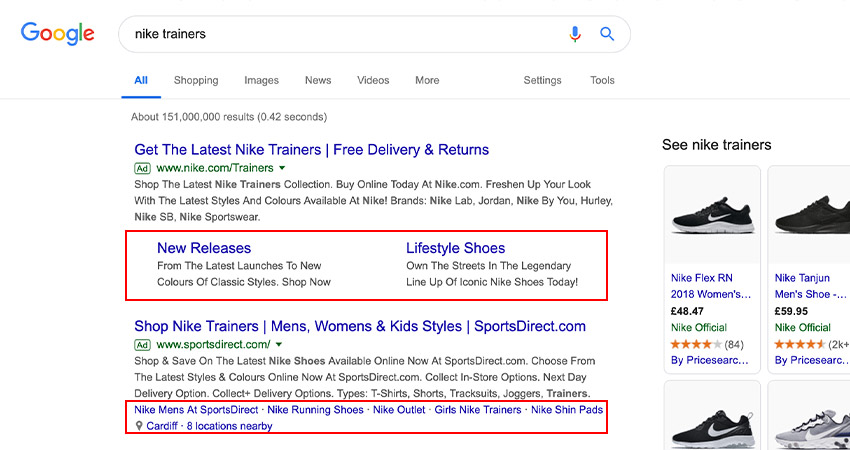
Ad content
- Use emotive language
- Create urgency
- Speak to the customer and for the customer, don’t just promote your business
- Provide meaningful content
- Using £ and % helps the click-through rate
- Every word needs to be Title case within an ad so it’s easier to read
Top 10 Best Performing Words:
- Your
- Free
- Now
- Get
- Online
- Our
- Save
- Best
- Shipping
- You
Campaign Settings
- Set your campaign goal, type, and objectives
- Make sure “Google Search Partners” or “Google Display network,” is unticked, your ads will appear as spam on unrelated sites
- Narrow down your search location based on your business
- Radius targeting is better if your targeting cities e.g if you put Cardiff as a location it will miss out North Cardiff, so radius can get a wider area
- Language – you want to select all languages, not just English, as it’s related to where a Gmail account is created not the language they speak
*Beginners tip* Always ensure you look over the “more settings” dropdowns to make sure you aren’t missing anything.
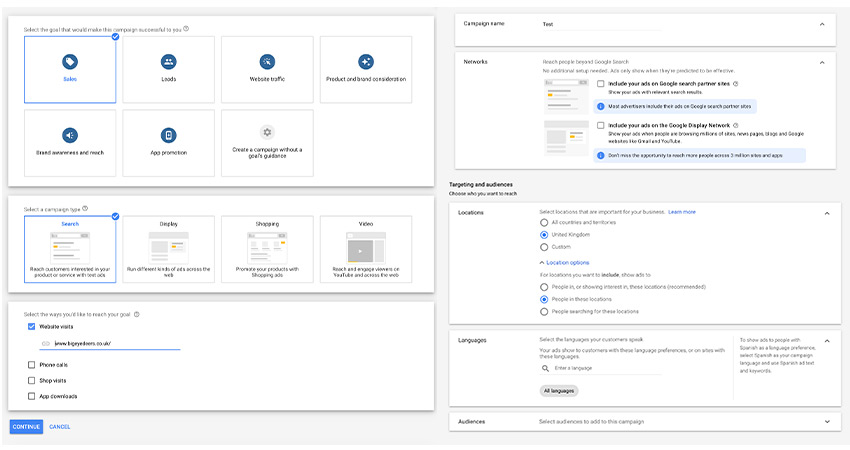
Budgeting and bidding
- Set your daily spend
- Standard delivery method
- Make sure you “select a bid strategy directly” and select “manual CPC” Do not select Enhanced CPC. Google will say this isn’t recommended, however, this is how you will get the most out of your budget, by having complete control of how your ads are displayed.
The above points cover the basics you need to set up an account with a few tips thrown in. So, I hope this helps all you beginners out there looking to take on the competitive world of PPC.
If you’re looking for online marketing services for your business, get in touch today to see how we can help!
Magento
eCommerce
Magento is the leading solution for eCommerce, and we’re specialists. Magento is easy-to-use, completely customisable and endlessly scalable.

Bespoke
Builds
We offer custom web development services for any requirement. Manufacturing from scratch, we deliver a project entirely tailored to your needs.
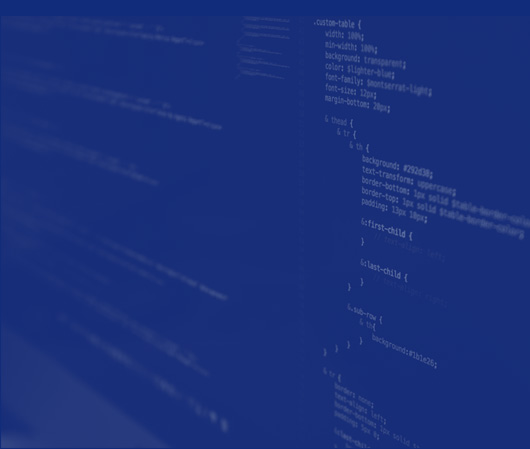
Working with brands nationally from our offices in Cardiff and Exeter, our tenacious team of designers and developers deliver sophisticated results every time.


